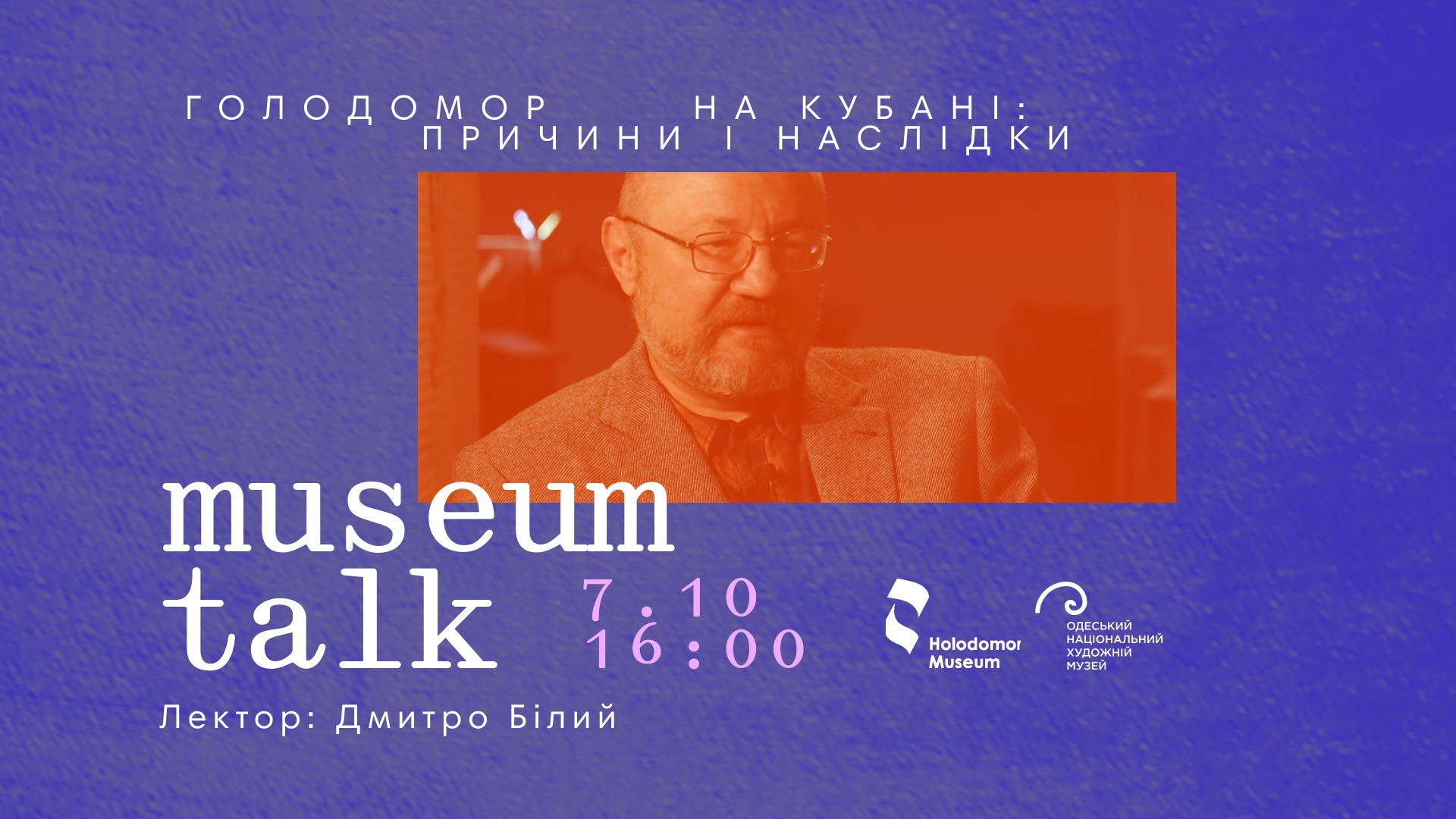“Holodomor in the Kuban: causes and consequences”: a lecture by Dmytro Bilyi in Odesa
On Saturday, October 7, we invite you to another lecture at the Odesa National Art Museum!
Did you know that at the beginning of the 20th century, 62% of the Kuban population considered themselves Ukrainians? We will talk about why and where they all went in the following lecture as part of our Museum Talk project, “Holodomor in the Kuban: causes and consequences.”
Where did the Ukrainians come from in the Kuban? Back in 1792, the Black Sea Cossack army, which consisted of former Zaporizhians, began to move there. Since the second half of the 19th century, the Ukrainian community of Kuban had become a component of the formation of the all-Ukrainian national space, but later it gradually disappeared.
At the lecture by Dmytro Bilyi, a researcher at the National Museum of the Holodomor-genocide, we will talk about:
• why dozens of Kuban cities with typically Ukrainian names are inhabited by non-Ukrainians today;
• about the emergence of the Kuban People’s Republic in 1918;
• about the insurgent anti-Bolshevik movement and processes of Ukrainization – indigenization in the Kuban;
• how the 1932-1933 Holodomor took place in the Kuban region;
• violent Russification and repression on this territory in the 1930s.
 When: October 7, at 4:00 p.m
When: October 7, at 4:00 p.m
 Where: Odesa, 5a Sofiivska str
Where: Odesa, 5a Sofiivska str
 Price: 150/75 ₴, tickets – at the link http://surl.li/lvcnv
Price: 150/75 ₴, tickets – at the link http://surl.li/lvcnv
